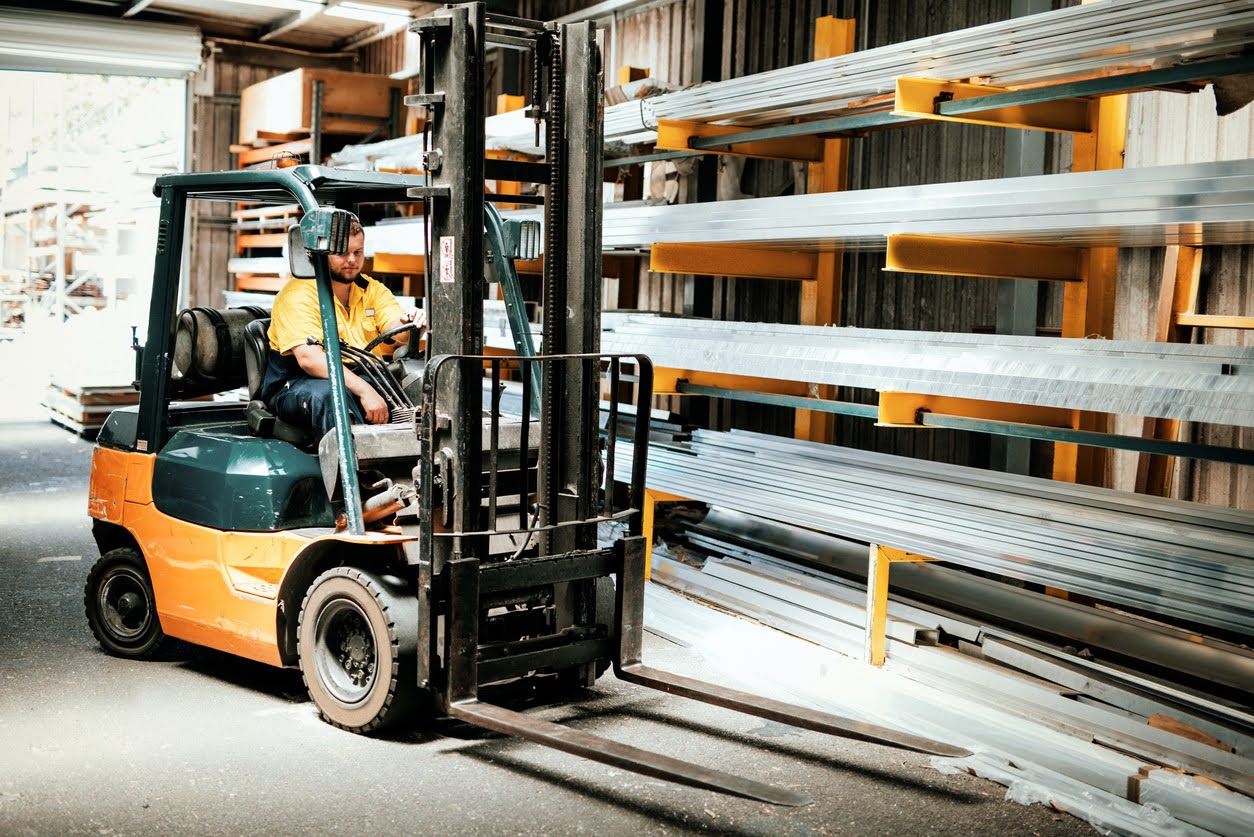Forklifts are vital in many industries. They assist in the transportation of heavy loads with ease and efficiency.
It is important to learn the types of forklifts to enable you to select the one that suits you. Every type is meant to perform certain tasks and under certain conditions.
Forklifts are everywhere, in warehouses, construction sites, etc. There are different types such as electric and internal combustion models.
Safety is a top priority when operating forklifts. Accidents can be prevented by knowing the hazards and control measures.
What Is a Forklift? An Overview
A forklift is an industrial machine used in lifting and moving heavy loads. They are very useful in material handling and contribute to efficiency and safety.
Forklifts are equipped with diverse features and capabilities, which fit different tasks. The typical characteristics are:
- Lifting loads by use of forked platforms (or tines)
- Electric or combustion powered operation
- Maneuverability for tight spaces
Forklift Classifications: The 7 Main Types
The Occupational Safety and Health Administration (OSHA) categorises forklifts into seven classes. Every class is designed to fit certain tasks and environments. These types of classifications will assist in choosing the most appropriate forklift that suits your needs.
Here are the seven main types of forklifts as classified:
- Class I: Electric Motor Rider Trucks
- Class II: Electric Motor Narrow Aisle Trucks
- Class III: Electric Motor Hand Trucks
- Class IV: Internal Combustion Engine Trucks (Solid/Cushion Tyres)
- Class V: Internal Combustion Engine Trucks (Pneumatic Tyres)
- Class VI: Electric and Internal Combustion Engine Tractors
- Class VII: Rough Terrain Forklift Trucks
The selection of the appropriate class guarantees efficiency and safety of operations. The classes are different with their own specifications and functions, which are essential in various tasks in the industry.
Common Types of Forklifts and Their Uses
Forklifts are multifunctional machines needed in different industries. They are of different types that are meant to perform specific tasks. Proper selection of a forklift leads to efficiency and safety.
Counterbalance Forklifts
The most popular is the counterbalance forklift. They are good at moving heavy loads, either indoors or outdoors. Their forks protrude in front, and are simple to use.
Reach Trucks
Reach trucks are most excellent in high stacking shelves and narrow aisles. They have a long mast, which enables them to go higher than the normal forklifts. They are ideal in small warehouses.
Pallet Jacks (Manual and Electric)
Pallet jacks are good to cover short distances of material movement. The manual one is based on human power. The electric one is convenient with motorised features.
Order Pickers
Retrieval of single items in high racks is done through order pickers. They enable the operators to raise themselves to the required height. This plays a crucial role in work in fulfillment centres.
Side Loaders
Side loaders can be used to pick long objects such as pipes. They are side loaded and thus ideal in narrow aisles. They work in tight places effectively.
Rough Terrain Forklifts
Outdoor conditions are suitable for rough terrain forklifts. They have big tyres that deal with rough surfaces. They are usually spotted in construction sites.
Telehandlers
Telehandlers are fitted with a telescopic boom with excellent reach. They are good when used to carry loads to the upper floors. They are commonly used in the construction and agriculture industries.
Walkie Stackers
Small warehouses suit the use of walkie stackers. They are small and easy to use. They are manually operated unlike the bigger forklifts, and they are ideal in narrow spaces.
Electric Forklifts vs. Internal Combustion Forklifts
Electric forklifts are clean and quiet. They are ideal to be used indoors because of their zero e-missions. They are also less demanding as far as maintenance is concerned.
On the contrary, forklifts that use internal combustion are potent. They are powered by diesel, gas, or propane and are thus more suitable for outdoor work. Their energy helps them to work on more demanding jobs.
These are some factors to consider when making a choice:
- Environment: Indoors favours electric forklifts; outdoors suits combustion models.
- Fuel Availability: Electric needs charging stations; combustion requires fuel supply.
- Maintenance: Electric forklifts need less upkeep than combustion types.
Forklift Hazards and Control Measures
There are some dangers of operating forklifts. These include tip-overs and collisions. These hazards need to be discussed in order to promote safety at the workplace.
These risks can be alleviated by implementing safety measures. Seatbelts should be fitted in the forklifts. The next safety requirement is to ensure that the area around the machine is visible.
It is important to conduct regular training for operators. It makes them aware of the best practices. There is a need to update the safety protocols regularly so as to capture any changes.
The important control measures are:
- Seatbelts: Essential for operator safety.
- Warning Signals: Alerts to nearby personnel.
- Regular Inspections: Ensures mechanical soundness.
- Operator Training: Keeps skills sharp and updated.
How to Choose the Right Forklift Type for Your Needs
The choice of the right forklift is determined by your operational needs. Take into consideration the environment and work.
Assess what kind of loads you will transport and the space you have. Some of the factors to consider are the lifting capacity and maneuverability.
What to consider when selecting a forklift:
- Load Capacity: Ensure the forklift can handle expected weights.
- Environment: Indoor, outdoor, or rough terrain?
- Space: Does it fit narrow aisles?
- Power Source: Electric or combustion?
Key Takeaways and Safety Tips
Forklift types lead to better efficiency in the warehouse. Safety is an important aspect to prevent accidents.
Safety tips to note are:
- Operator Training: Regularly update skills.
- Equipment Maintenance: Schedule frequent inspections.
- Safety Gear: Always wear protective items.
- Load Management: Never exceed forklift capacity.
Pay attention to training of operators and regular inspection of equipment. Security helps to improve productivity and reduce risks.




